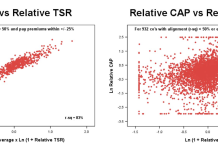Roland Bloesch, VP and Global Head of Regulation Industries at SAP Customer Experience highlights how digital transformation can reinvent banking as banks become forward-thinking, recognising the need to partner with fintechs
Now more than ever before, the banking industry is faced with a plethora of disruptors; cryptocurrency, bitcoin and blockchain are all infiltrating the market, and now “challenger banks” have emerged. Challenger banks focus solely on the digital-only service and place great emphasis on exceptional customer service. In the UK alone there are more than 20 challenger banks making their mark.
The digital direction
For traditional banks to succeed against challenger banks which have always had tech at their core, a digital transformation needs to occur. The concept of “Digital Transformation” is very fluid, as it looks different in every industry and every company. But in general terms, it is the integration of digital technology into all areas of a business, which then leads to fundamental changes in how the business operates and delivers value to its customers.
Banks which look to run on a digital core can see reduced costs and streamlined processes and this end-to-end integration can also help to provide a more seamless, engaging customer experience. It also makes room for further business transformation with new digital technologies like blockchain and artificial intelligence.
Indeed, the risk of going digital lies with potentially impacting the banking workforce, with automation sometimes resulting in layoffs and staff reductions. On the other hand, there is a growing demand for data scientists with banking experience—a skill set not easy to find in today’s market. It is time for the industry to develop a new workforce model to educate existing staff and recruit new talent with technology-focused skills.
Big data and the customer experience
The banking industry is among the most data-driven of industries. Regulatory and insurance requirements mean banks must store a huge amount of transaction data over many years. The challenge is knowing how to translate an abundance of information into meaningful insights.
Enter, Big Data. If utilised correctly, Big Data provides significant opportunities for banks to outshine their competition. It allows the use of disruptive technologies like artificial intelligence, blockchain, and the internet of things (IoT) to map the customer journey in a 360-degree view and give banks deeper insight on where they can provide a higher level of service and create more value.
Utilising technology to revamp the banking business model
Through new advanced technologies, banks are able to further build customer engagement with innovative personalised offerings. The industry already leverages IoT with mobile apps, swipe cards, card readers, sensors and ATMs. It also provides a new opportunity for real-time asset financing.
There are some banks that are already using blockchain technology to transform their business processes, as it offers secure, convenient alternatives to traditional bank processes. Recently, blockchain has been garnering attention because of its ability to reduce fraud in the financial world. Blockchain is already used in the financial instruments areas of banking, including payments (cross-border, peer-to-peer, corporate and interbank); private equity asset transfers; tracking derivative commodities; the management of trading, spending, mortgage and loan records, microfinance applications, and customer service records.
Blockchain can also be used to decrease the processing time for cross-border payments, and what usually takes three to six days, can be done in just minutes. This elevates the customer experience to a new level with lower cost real-time transactions. Stack processes improved by blockchain include clearing networks; international transfers; clearing and settlement; auditing, reconciliation, and reporting; and asset ownership.
Finally, alternative technologies, such as machine learning, can help automate manual processes, which can help to benefit those employees in fraud management, customer segmentation activities and trading.
Banking via the cloud
Banks are battling it out to make the most of market opportunities available through digital transformation.
With the new digital economy, however, comes new risks that banks must manage. As such, there is a critical need for affordable computing platforms that provide greater agility.
It is undeniable that the banking industry is being changed by new digital technologies. Banks that embrace change and the innovation that comes with it by adopting new technologies, have unprecedented opportunities to change and improve how they provide financial services. Including offering the ability to:
- Build an open and agile platform that makes it easy to meet regulatory requirements.
- Innovate with disruptive technologies like artificial intelligence (AI), IoT, and blockchain.
- Provide customers with seamless real-time, multi-channel digital interactions.
- Simplify and optimise business processes through standardisation, optimisation, and adoption of cloud solutions.
- Collaborate with financial technology partners to develop digital products.
If banks are to achieve digitalisation, it is critical that they reconstruct their business models and processes. Utilising innovative capabilities in a cloud deployment can not only accelerate digital transformation initiatives but also deliver business-wide process improvements.











